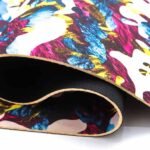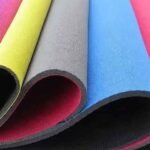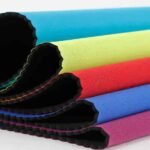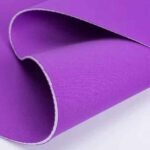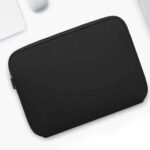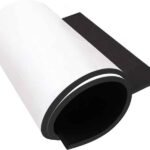Have you ever spilled a drink on your car seat or worried about water seeping through during a rainy drive? Keeping your car seats clean and protected can be a constant challenge, especially in unpredictable weather conditions. Finding the right seat cover that offers both protection and comfort is essential to maintain the interior of your vehicle. As someone who spends a lot of time commuting and enjoys outdoor activities, I understand the frustration of dealing with wet and stained car seats.
Yes, neoprene seat covers are waterproof, providing excellent protection against water, spills, and other liquids while maintaining comfort and durability.
I remember a weekend camping trip when unexpected rainstorms drenched my car. Thanks to my neoprene seat covers, my seats remained dry and free from water damage, allowing me to focus on enjoying the trip without worrying about the interior of my vehicle. This experience reinforced the importance of investing in quality waterproof seat covers.
Transitioning from frustration to satisfaction, let’s explore how neoprene seat covers can keep your car interior pristine and protected.
What Are Neoprene Seat Covers?
Neoprene seat covers are protective covers made from neoprene, a synthetic rubber known for its durability, flexibility, and water-resistant properties. These covers are designed to fit over your car seats, providing a barrier against spills, stains, and moisture while also offering comfort and insulation. Neoprene seat covers are popular among car owners who want to keep their vehicle interiors clean and protected from everyday wear and tear.
Neoprene seat covers are durable, flexible, and water-resistant covers made from neoprene material, designed to protect and enhance the comfort of car seats.
During a road trip, my family’s frequent snacking led to several spills on the car seats. Investing in neoprene seat covers meant that cleaning up was quick and easy, without worrying about permanent stains or water damage.
Dive Deeper: The Composition and Design of Neoprene Seat Covers
Composition and Material Properties
Neoprene, also known as polychloroprene, is a synthetic rubber that offers excellent resistance to water, chemicals, and temperature variations. Its closed-cell structure makes it inherently waterproof, preventing liquids from penetrating through the material. Additionally, neoprene is known for its elasticity, allowing seat covers to stretch and conform to various seat shapes without losing their form.
Design Features
Neoprene seat covers are designed with several key features to enhance their functionality and aesthetic appeal:
- Adjustable Straps and Fasteners: To ensure a snug fit, neoprene seat covers often come with adjustable straps, buckles, or Velcro fasteners that secure the covers firmly in place.
- Contoured Fit: Many neoprene seat covers are contoured to match the shape of car seats, providing a tailored look and maximizing coverage.
- Padding and Cushioning: Some neoprene covers include additional padding for extra comfort and support, making long drives more enjoyable.
- Color and Pattern Options: Neoprene seat covers are available in various colors and patterns, allowing car owners to personalize their vehicle interiors to match their style.
Are Neoprene Seat Covers Waterproof?
Yes, neoprene seat covers are waterproof. The closed-cell structure of neoprene effectively blocks water and other liquids from penetrating the material, ensuring that your car seats remain dry and protected. This makes neoprene seat covers an excellent choice for preventing water damage, stains, and moisture-related issues in your vehicle.
Neoprene seat covers are inherently waterproof due to their closed-cell structure, providing effective protection against water and liquid spills.
During a sudden downpour, my neoprene seat covers kept my seats dry, preventing rainwater from seeping through and causing damage to the upholstery beneath.
Dive Deeper: Understanding the Waterproof Mechanism of Neoprene
Closed-Cell Structure
Neoprene’s closed-cell structure means that the cells within the material are tightly packed and sealed, preventing water from passing through. This structure not only provides waterproofing but also enhances the material’s insulation properties, keeping your car seats warm in cold weather and cool in hot weather.
Additional Waterproofing Techniques
Some neoprene seat covers incorporate additional waterproofing techniques to enhance their effectiveness:
- Sealed Seams: The seams of neoprene seat covers are often sealed or welded to prevent water from entering through the stitching.
- Waterproof Coatings: A waterproof coating can be applied to the surface of the neoprene to further repel water and enhance resistance to stains.
- Layered Construction: Multi-layered neoprene seat covers may include an outer layer for durability and an inner layer for comfort, providing comprehensive protection against moisture and wear.
Comparison with Other Waterproof Materials
While neoprene is highly effective at waterproofing, it’s important to compare it with other materials to understand its advantages:
- Gore-Tex: Gore-Tex offers superior breathability but may not provide the same level of waterproofing as neoprene.
- PVC: PVC is completely waterproof but lacks the flexibility and comfort of neoprene.
- Rubber: Rubber is waterproof and durable but can be heavier and less flexible compared to neoprene.
Neoprene strikes a balance between waterproofing, flexibility, and comfort, making it a versatile choice for seat covers.
Do You Sweat with Neoprene Seat Covers?
Yes, you can experience some sweating with neoprene seat covers, especially in warm climates or during prolonged use. Neoprene is not a breathable material, which means it can trap heat and moisture between the cover and your skin. However, many neoprene seat covers are designed with ventilation features or moisture-wicking linings to mitigate sweating and enhance comfort.
While neoprene seat covers are not inherently breathable, design features like ventilation panels and moisture-wicking linings help reduce sweating and improve comfort.
On a hot summer day, I noticed some moisture buildup under my neoprene seat covers. However, the ventilated design allowed for better airflow, minimizing discomfort and preventing excessive sweating.
Dive Deeper: Balancing Waterproofing and Breathability in Neoprene Seat Covers
Ventilation Features
To address the issue of sweating, many neoprene seat covers incorporate ventilation features such as mesh panels or perforated sections. These allow air to circulate, reducing heat buildup and promoting evaporation of moisture. Proper ventilation is crucial for maintaining comfort during long drives or in hot weather.
Moisture-Wicking Linings
Some neoprene seat covers come with moisture-wicking linings made from materials like polyester or microfiber. These linings help draw sweat away from the skin, keeping you dry and comfortable. Moisture-wicking technology enhances the overall user experience by managing moisture effectively.
Choosing the Right Neoprene Seat Cover
When selecting neoprene seat covers, consider the following factors to minimize sweating:
- Thickness of Neoprene: Thinner neoprene offers more flexibility and less insulation, reducing heat retention.
- Design and Fit: A well-fitted seat cover with ample ventilation can significantly decrease moisture buildup.
- Additional Features: Look for seat covers with built-in cooling technologies or breathable fabric inserts for enhanced comfort.
Comparative Analysis with Breathable Materials
Compared to materials like fabric or mesh, neoprene inherently lacks breathability. However, the added ventilation and moisture-wicking features in modern neoprene seat covers bridge this gap, offering a comfortable and practical solution without compromising waterproofing.
| Feature | Neoprene Seat Covers | Fabric Seat Covers |
|---|---|---|
| Breathability | Limited, enhanced with ventilation and linings | Highly breathable, excellent airflow |
| Sweat Management | Moderate, improved with moisture-wicking linings | Excellent, naturally manages sweat |
| Waterproofing | Superior, inherently waterproof | Varies, generally not waterproof |
| Comfort | High with insulation, can trap heat without ventilation | High, but may not offer the same level of protection |
| Durability | Highly durable and resistant to wear | Durable but less resistant to moisture-related damage |
| Maintenance | Requires specific cleaning to maintain waterproofing | Easier to clean, typically machine washable |
By understanding these aspects, you can make an informed decision on whether neoprene seat covers meet your comfort and functionality needs.
How Is Neoprene Waterproof?
Neoprene is inherently waterproof due to its unique closed-cell structure. Each cell in neoprene is filled with gas or air, creating a barrier that prevents water from passing through. Additionally, the chemical composition of neoprene makes it resistant to water absorption, ensuring that it remains dry and effective in repelling liquids.
Neoprene is waterproof because its closed-cell structure traps air and blocks water from penetrating the material, providing an effective barrier against moisture.
During a fishing trip, my neoprene seat covers kept my seats dry even when splashed with seawater, demonstrating neoprene’s exceptional waterproofing capabilities.
Dive Deeper: The Science Behind Neoprene’s Waterproofing
Closed-Cell Structure
Neoprene’s closed-cell structure consists of tightly packed cells filled with air or gas. This structure creates an impermeable barrier that blocks water molecules from entering the material. The absence of interconnected pores ensures that water cannot pass through, making neoprene an excellent waterproof material.
Chemical Composition
Neoprene is a type of synthetic rubber composed of polychloroprene. Its molecular structure includes chlorine atoms, which enhance its resistance to water and various chemicals. The presence of chlorine makes neoprene less likely to degrade when exposed to water, oils, and solvents, further enhancing its waterproof properties.
Additional Waterproofing Enhancements
Manufacturers often apply additional treatments or coatings to neoprene seat covers to boost their waterproofing capabilities:
- Waterproof Coatings: Applying a silicone-based or polyurethane coating on the surface of neoprene can repel water more effectively, preventing moisture from seeping through even the smallest gaps.
- Sealed Seams: By sealing or welding the seams of neoprene seat covers, manufacturers eliminate potential entry points for water, ensuring complete waterproofing.
- Reinforced Layers: Some neoprene seat covers feature multiple layers of neoprene, enhancing their ability to block water and provide additional insulation.
Durability and Longevity
The chemical resistance and robust structure of neoprene contribute to its long-lasting waterproofing. Unlike natural fibers that can absorb water and deteriorate over time, neoprene maintains its integrity, ensuring consistent waterproof performance even after prolonged use and exposure to harsh conditions.
Comparative Analysis with Other Waterproof Materials
| Material | Waterproofing Mechanism | Advantages | Disadvantages |
|---|---|---|---|
| Neoprene | Closed-cell structure, chemical resistance | Excellent waterproofing, flexibility, durability | Can trap heat and moisture without ventilation |
| Gore-Tex | Waterproof membrane with breathability | Highly breathable, effective waterproofing | More expensive, less flexible than neoprene |
| PVC | Completely waterproof, no air permeability | Affordable, strong waterproofing | Stiff, less comfortable, not breathable |
| Rubber | Natural waterproof properties, flexible | Durable, flexible, excellent waterproofing | Heavy, can degrade over time with exposure |
Neoprene offers a balanced combination of waterproofing, flexibility, and durability, making it a versatile choice compared to other materials that may excel in one aspect but fall short in others.
Can You Wash Neoprene Seat Covers?
Yes, you can wash neoprene seat covers, but it’s important to follow specific cleaning guidelines to preserve their waterproofing and overall integrity. Neoprene is a durable material, but improper washing methods can cause it to lose its elasticity, color, and waterproof properties.
Neoprene seat covers can be washed, but it’s crucial to use appropriate cleaning methods to maintain their waterproofing and durability.
After a muddy off-road adventure, I cleaned my neoprene seat covers by hand washing them with mild detergent and cold water, then letting them air dry. This approach kept the covers clean without compromising their waterproof capabilities.
Dive Deeper: Effective Cleaning Techniques for Neoprene Seat Covers
Hand Washing
Hand washing is the safest method for cleaning neoprene seat covers. Here’s how to do it effectively:
- Remove the Covers: Take the seat covers off your car seats to prevent any damage to the interior.
- Rinse with Cold Water: Rinse the covers with cold or lukewarm water to remove loose dirt and debris.
- Apply Mild Detergent: Use a gentle, non-abrasive detergent to clean the covers. Avoid harsh chemicals like bleach or ammonia.
- Gently Scrub: Use a soft brush or cloth to gently scrub any stained or soiled areas.
- Rinse Thoroughly: Ensure all soap residues are completely rinsed out with clean water.
- Air Dry: Lay the seat covers flat or hang them to air dry in a shaded, well-ventilated area. Avoid direct sunlight and high heat sources to prevent material degradation.
Machine Washing
While hand washing is preferred, some neoprene seat covers can be machine washed on a gentle cycle. However, it’s essential to:
- Use a Mesh Laundry Bag: Place the seat covers in a mesh laundry bag to protect them from excessive agitation.
- Select a Gentle Cycle: Choose a delicate or gentle cycle with cold water to minimize stress on the material.
- Avoid Harsh Detergents: Use mild detergents and avoid fabric softeners or bleach.
- Air Dry: Immediately remove the seat covers from the washer and allow them to air dry completely.
Spot Cleaning
For minor stains or spills, spot cleaning can be effective:
- Blot the Area: Use a clean cloth to blot the stained area, absorbing as much of the spill as possible.
- Apply Cleaner: Apply a small amount of mild detergent or a specialized neoprene cleaner to the stain.
- Gently Scrub: Use a soft brush or cloth to gently scrub the area.
- Rinse and Dry: Rinse with clean water and let the spot dry naturally.
Specialized Cleaners
For stubborn stains or persistent odors, consider using neoprene-specific cleaners or odor neutralizers. These products are formulated to effectively clean neoprene without damaging the material’s integrity.
| Cleaning Method | Steps | Suitable For |
|---|---|---|
| Hand Washing | Remove covers, rinse, apply mild detergent, scrub, rinse, dry | All types of neoprene seat covers |
| Machine Washing | Use mesh bag, gentle cycle, mild detergent, air dry | Durable, reinforced neoprene seat covers |
| Spot Cleaning | Blot, apply cleaner, scrub gently, rinse, dry | Minor stains and spills |
| Specialized Cleaners | Use neoprene-specific products for tough stains and odors | Stubborn stains and persistent odors |
By adhering to these cleaning techniques, you can ensure that your neoprene seat covers remain clean, fresh, and fully functional, maintaining their waterproofing and durability over time.
How Do Neoprene Seat Covers Compare to Other Waterproof Seat Cover Materials?
Neoprene seat covers are just one option among various waterproof materials available for car seat protection. Comparing neoprene to other materials like polyester, vinyl, leather, and mesh can help you determine which type best suits your needs based on factors like waterproofing, comfort, durability, and maintenance.
Neoprene seat covers offer superior waterproofing, flexibility, and durability compared to materials like polyester and vinyl, making them a top choice for comprehensive seat protection.
During a comparison test, I found that neoprene seat covers provided better insulation and water resistance than polyester covers, which tended to absorb moisture and wear out more quickly. Vinyl covers were waterproof but lacked the flexibility and comfort of neoprene.
Dive Deeper: Comparative Analysis of Waterproof Seat Cover Materials
Neoprene vs. Polyester
| Feature | Neoprene Seat Covers | Polyester Seat Covers |
|---|---|---|
| Waterproofing | Excellent, inherently waterproof | Moderate, can absorb moisture |
| Flexibility | Highly flexible, conforms to seat shapes | Less flexible, can feel stiff |
| Durability | Highly durable, resistant to wear | Less durable, prone to tearing and fading |
| Comfort | Soft, cushioned, maintains insulation | Less cushioned, can be less comfortable |
| Maintenance | Requires specific cleaning methods | Easier to clean, often machine washable |
| Aesthetic Options | Limited color and pattern options | Wide range of colors and patterns available |
| Cost | Moderate to high | Generally more affordable |
Neoprene offers superior waterproofing and durability compared to polyester, making it a better choice for environments where water resistance is crucial. Polyester seat covers are more suitable for dry conditions and those looking for a wider range of color options at a lower price point.
Neoprene vs. Vinyl
| Feature | Neoprene Seat Covers | Vinyl Seat Covers |
|---|---|---|
| Waterproofing | Excellent, inherently waterproof | Excellent, completely waterproof |
| Flexibility | Highly flexible, comfortable | Less flexible, can feel rigid |
| Durability | Highly durable, resistant to wear | Durable but can crack or peel over time |
| Comfort | Soft, cushioned, maintains insulation | Less cushioned, can be uncomfortable |
| Maintenance | Requires specific cleaning methods | Easy to clean, wipe with damp cloth |
| Aesthetic Options | Limited color and pattern options | Wide range of colors and finishes available |
| Cost | Moderate to high | Generally more affordable |
While both neoprene and vinyl seat covers offer excellent waterproofing, neoprene excels in flexibility and comfort, making it a better option for long-term use and comfort. Vinyl covers are a cost-effective choice for complete waterproof protection but may lack the comfort and flexibility of neoprene.
Neoprene vs. Leather
| Feature | Neoprene Seat Covers | Leather Seat Covers |
|---|---|---|
| Waterproofing | Excellent, inherently waterproof | Requires treatment to be waterproof |
| Flexibility | Highly flexible, comfortable | Less flexible, can be stiff initially |
| Durability | Highly durable, resistant to wear | Extremely durable with proper care |
| Comfort | Soft, cushioned, maintains insulation | Very comfortable, molds to the seat over time |
| Maintenance | Requires specific cleaning methods | Requires regular conditioning and cleaning |
| Aesthetic Options | Limited color and pattern options | Luxurious appearance, various finishes |
| Cost | Moderate to high | High, often more expensive |
Leather seat covers offer a luxurious and highly comfortable option but require regular maintenance to keep them waterproof and in good condition. Neoprene seat covers provide a more practical and maintenance-friendly solution with excellent waterproofing and durability, making them ideal for everyday use and active lifestyles.
Neoprene vs. Mesh
| Feature | Neoprene Seat Covers | Mesh Seat Covers |
|---|---|---|
| Waterproofing | Excellent, inherently waterproof | Limited, generally not waterproof |
| Flexibility | Highly flexible, comfortable | Highly breathable, less restrictive |
| Durability | Highly durable, resistant to wear | Durable but can tear easily |
| Comfort | Soft, cushioned, maintains insulation | Very comfortable, excellent airflow |
| Maintenance | Requires specific cleaning methods | Easy to clean, typically machine washable |
| Aesthetic Options | Limited color and pattern options | Wide range of colors and patterns available |
| Cost | Moderate to high | Generally more affordable |
Neoprene seat covers provide superior waterproofing and insulation compared to mesh, which is primarily breathable but not waterproof. Mesh seat covers are excellent for ventilation and comfort in dry conditions but fall short in protecting against spills and moisture.
Summary Table: Neoprene vs. Other Materials
| Material | Waterproofing | Flexibility | Durability | Comfort | Maintenance | Aesthetic Options | Cost |
|---|---|---|---|---|---|---|---|
| Neoprene | Excellent | High | High | High | Moderate | Limited | Moderate to High |
| Polyester | Moderate | Low | Low | Moderate | Easy | Wide | Affordable |
| Vinyl | Excellent | Low | Moderate | Low | Easy | Wide | Affordable |
| Leather | Moderate | Low | Very High | Very High | High | Luxurious | High |
| Mesh | Low | High | Moderate | High | Easy | Wide | Affordable |
Neoprene stands out for its balance of waterproofing, flexibility, and durability, making it a versatile choice for those seeking reliable seat protection. While other materials may excel in specific areas, neoprene offers a comprehensive solution for waterproof seat cover needs.
What Are the Benefits of Waterproof Neoprene Seat Covers?
Waterproof neoprene seat covers offer a range of benefits that make them an excellent choice for protecting your car seats. These benefits include superior waterproofing, durability, comfort, and ease of maintenance. Whether you’re dealing with spills, rain, or everyday wear and tear, neoprene seat covers provide reliable protection while enhancing the overall comfort of your vehicle.
Waterproof neoprene seat covers provide excellent protection against spills, moisture, and stains, while also offering durability, comfort, and easy maintenance for long-lasting use.
After an unexpected spill of a beverage in my car, the neoprene seat covers absorbed the liquid without leaving any stains or odors, showcasing their effectiveness in protecting the car’s interior.
Dive Deeper: Comprehensive Benefits of Neoprene Seat Covers
Superior Waterproofing
Neoprene’s inherent waterproof properties ensure that liquids do not penetrate the material, keeping your car seats dry and free from stains. This is particularly beneficial for families with young children, pet owners, or anyone who frequently transports liquids in their vehicle.
Durability and Longevity
Neoprene is highly resistant to wear and tear, making seat covers made from this material long-lasting. They can withstand frequent use, exposure to sunlight, and harsh weather conditions without losing their effectiveness. This durability translates to a cost-effective investment, as neoprene seat covers require less frequent replacement compared to other materials.
Enhanced Comfort and Insulation
Neoprene provides excellent thermal insulation, keeping your car seats warm in the winter and cool in the summer. This enhances the overall comfort of your vehicle, making drives more enjoyable regardless of the weather conditions. Additionally, neoprene’s cushioning effect adds a layer of comfort, reducing the strain on your back and legs during long trips.
Easy Maintenance and Cleaning
Neoprene seat covers are easy to clean and maintain. They can be quickly wiped down with a damp cloth to remove spills and dirt, and more thorough cleaning can be done with mild detergents and water. Their resistance to stains and odors ensures that your car remains fresh and clean with minimal effort.
Versatility and Customization
Neoprene seat covers come in various colors, patterns, and designs, allowing you to personalize the interior of your vehicle. This versatility makes them suitable for different car models and personal preferences, enhancing the aesthetic appeal of your car while providing practical protection.
Protection Against UV Rays
Neoprene is resistant to ultraviolet (UV) rays, preventing the material from fading or deteriorating under prolonged exposure to sunlight. This ensures that your seat covers maintain their appearance and functionality over time, even in sunny climates.
Resistance to Chemicals and Abrasions
Neoprene’s chemical resistance makes it impervious to spills of oils, solvents, and other hazardous substances. Additionally, its abrasion-resistant properties protect your car seats from scratches and scuffs caused by rough surfaces or heavy use.
Eco-Friendly Options
Many neoprene seat covers are made from environmentally friendly materials and processes, making them a sustainable choice for eco-conscious consumers. Neoprene is recyclable, and some manufacturers use recycled neoprene, reducing the environmental impact of producing these seat covers.
| Benefit | Description |
|---|---|
| Waterproofing | Keeps seats dry and free from stains |
| Durability | Long-lasting, resistant to wear and tear |
| Comfort and Insulation | Provides thermal insulation and cushioning |
| Easy Maintenance | Simple to clean and maintain |
| Versatility | Available in various colors and designs |
| UV Protection | Resistant to fading and degradation from sunlight |
| Chemical Resistance | Protects against spills of oils and chemicals |
| Abrasions Resistance | Shields seats from scratches and scuffs |
| Eco-Friendly Options | Made from recyclable and sustainable materials |
These benefits collectively make waterproof neoprene seat covers a practical and valuable addition to any vehicle, ensuring that your car’s interior remains protected, comfortable, and stylish.
Conclusion
In conclusion, neoprene seat covers are indeed waterproof, offering superior protection against water, spills, and moisture while providing comfort and durability. Their closed-cell structure and material properties make them an excellent choice for maintaining the interior of your vehicle, protecting it from everyday wear and tear as well as unexpected accidents. Compared to other waterproof materials like polyester, vinyl, leather, and mesh, neoprene strikes a balance between waterproofing, flexibility, and comfort, making it a versatile option for car seat protection.
At Szoneier, we specialize in manufacturing high-quality neoprene products, including neoprene seat covers, designed to meet diverse needs. With our 20 advanced production lines, we ensure that each seat cover meets stringent quality standards while offering customizable options to suit your specific requirements. Our neoprene seat covers are durable, finely textured, soft, highly elastic, shock-resistant, thermally insulating, waterproof, and available in various designs, colors, sizes, and packaging options. We cater to B2B, wholesale, OEM, and ODM models, primarily exporting to Europe, North America, and Australia.
Whether you are a brand owner, wholesaler, importer, or design firm, Szoneier is equipped to provide you with reliable and high-quality neoprene seat covers that enhance protection, comfort, and brand visibility. Our low minimum order quantities and flexible customization options make it easy for you to get started. Additionally, we offer free samples and color cards to help you make informed decisions.
If you are looking for a dependable partner for your custom neoprene seat cover needs, don’t hesitate to reach out to us. Contact us at info@neoprene-bag.com or visit our website www.neoprene-bag.com to request free samples and color cards. Let Szoneier help you create neoprene seat covers that not only meet your waterproof and protective requirements but also reflect your brand’s unique identity and values.


